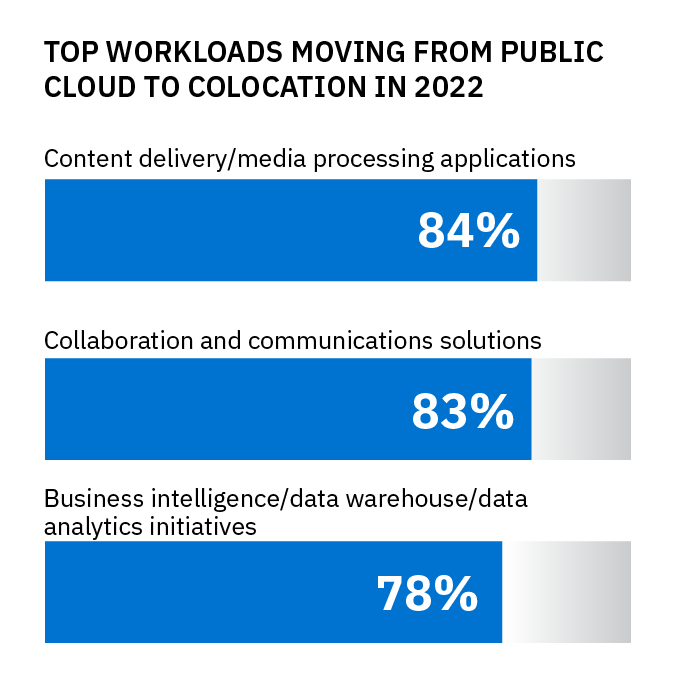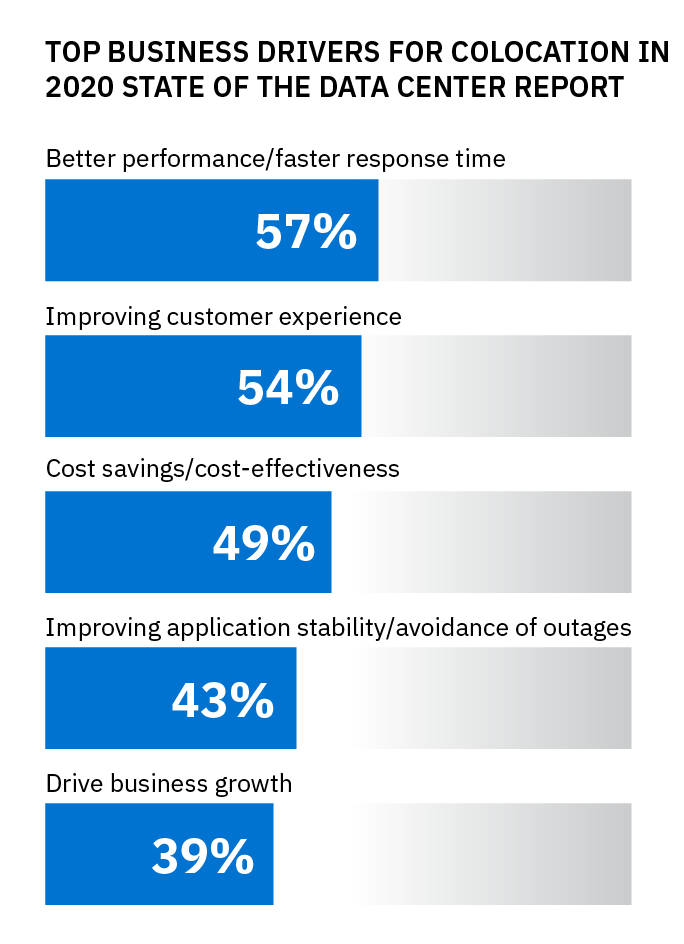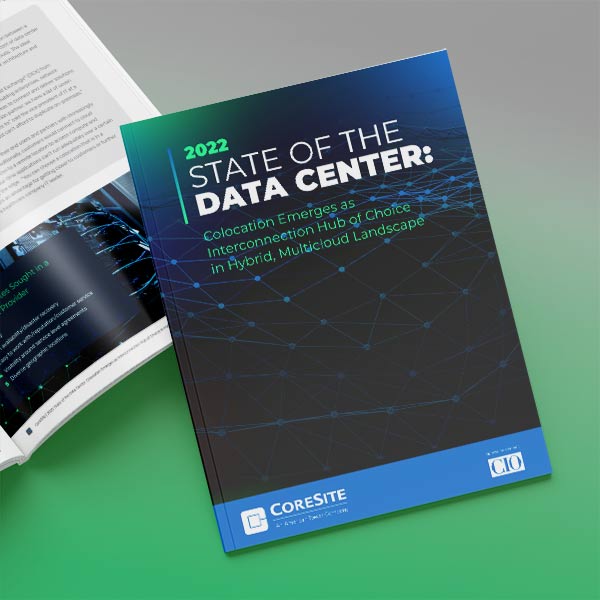
CoreSite and CIO Release 2022 State of the Data Center Report
Successful IT leaders have ability to balance and optimize resources – which includes personnel, the services and workloads in multicloud deployments, risk and their budget. What the 2022 State of the Data Center Report reveals, at the highest level, is that the most competitive digital businesses are constantly evaluating and altering their hybrid IT strategy to balance daily operations tasks with IT modernization initiatives.
The 2022 State of the Data Center: Colocation Emerges as Interconnection Hub of Choice in Hybrid, Multicloud Landscape is compiled from a quantitative survey of 300 IT executives as well as in-depth interviews with seven IT/business leaders.

Here are a few teasers from the findings:
- Continued migration of select workloads from public clouds into colocation – Content delivery/media processing applications, collaboration and communications solutions and business intelligence (BI) solutions top the list of repatriations.
- Shifting internal teams’ priorities as a result of using colocation – IT teams can concentrate on business-critical projects instead of operations, an increase of more than 50% in 2022 compared to 2021.
- Direct connection to major clouds is increasingly important – 96% expect native, direct connections to major cloud service providers, as compared to 90% in 2021.
John Gallant, Enterprise Consulting Director at CIO, sums up the annual research, saying, “The IT landscape has become far more diverse as companies ramp up digitization, strive for greater business agility and pursue new revenue-generation models. Organizations have discovered a one-size-fits-all cloud strategy is not the answer – agile and flexible multicloud infrastructure strategies are often a better, long-term solution.”
What Has Not Changed – Business Drivers for Colocation

We decided to look back to the 2020 State of the Data Center Report to see why colocation is a constant in the changing digital transformation equation. In the 2022 survey, respondents called out improved security, reliability, cost and performance as primary reasons to transition to a colocation model.
In 2020, 53% of respondents said increased security was a key driver for moving workloads to colocation facilities, and 48% said it was to increase availability/disaster recovery. The survey also reports that 49% of respondents leveraged colocation partners to elevate cost-savings/cost-effectiveness.**
We did not forget about performance. In 2020, a digital media executive said he chose colocation to “gain reliability, performance, security, speed [and] reduced maintenance. It also allows us to manage risk.” As we said above, improved performance was also a primary reason to opt for colocation.
Keep Moving to a Future-Ready Infrastructure
Evaluating present and past industry trends compels thinking about the future for colocation and data centers. Clearly, more resources will need to be positioned at the edge to support workloads running close to end users and edge applications. Wireless and wireline convergence, to enable 5G and meet the near real-time latency requirements for both current and future use cases, is another sure bet. Obviously, wireless/wireline convergence is starting to take place. We are excited to help build the converged infrastructure for tomorrow as a subsidiary of wireless provider, American Tower. Enterprises share our enthusiasm. According to a respondent at a software as a service (SaaS) provider, “We are looking for the possibility of interesting connectivity such as cellular amplified connectivity – not just high-speed, high-bandwidth, low-latency connectivity.”*
Edge data centers will be built at the wireless tower site to deliver the compute and storage needed there, and to move data to the increasingly interconnected digital ecosystem – which includes regional and “core” data centers, major cloud providers and a large assortment of stakeholders. Exactly what edge data centers will be in terms of footprint is nebulous, but that’s one of the reasons why checking in each year on the State of the Data Center Report can be useful when planning and implementing a future-ready hybrid IT infrastructure.

Get the 2022 State of the Data Center:
Colocation Emerges as Interconnection Hub of Choice in Hybrid, Multicloud Landscape
Please download, read and share the 2022 State of the Data Center Report. When you are ready, contact us to take the next steps in building a customized, optimized and flexible multicloud IT environment.
Also, keep an eye out for the next blog focused on findings from the 2022 State of the Data Center Report, from Maile Kaiser, SVP of Sales and Marketing at CoreSite.








